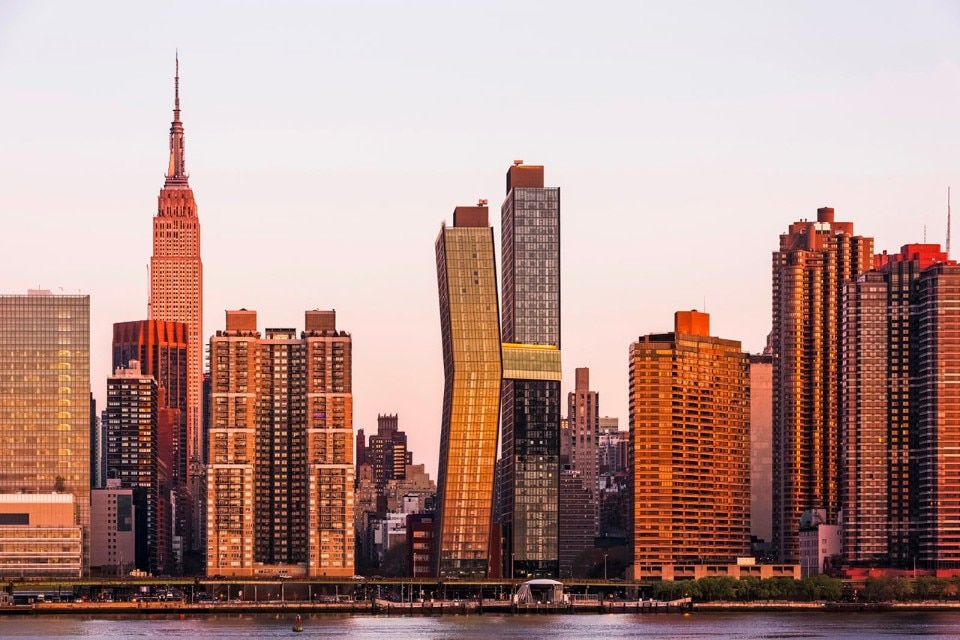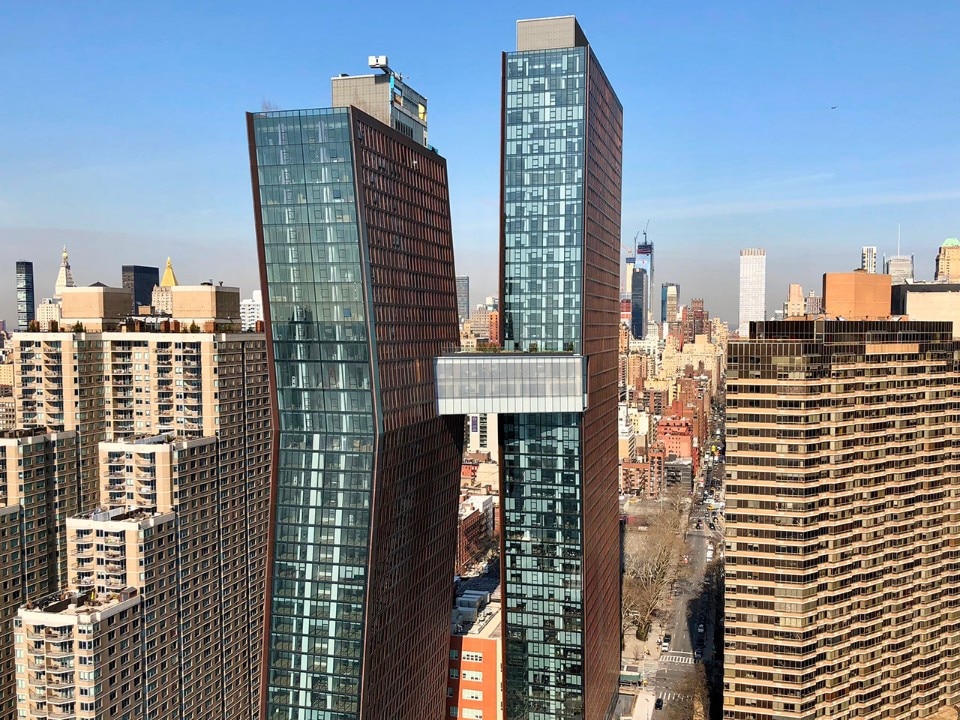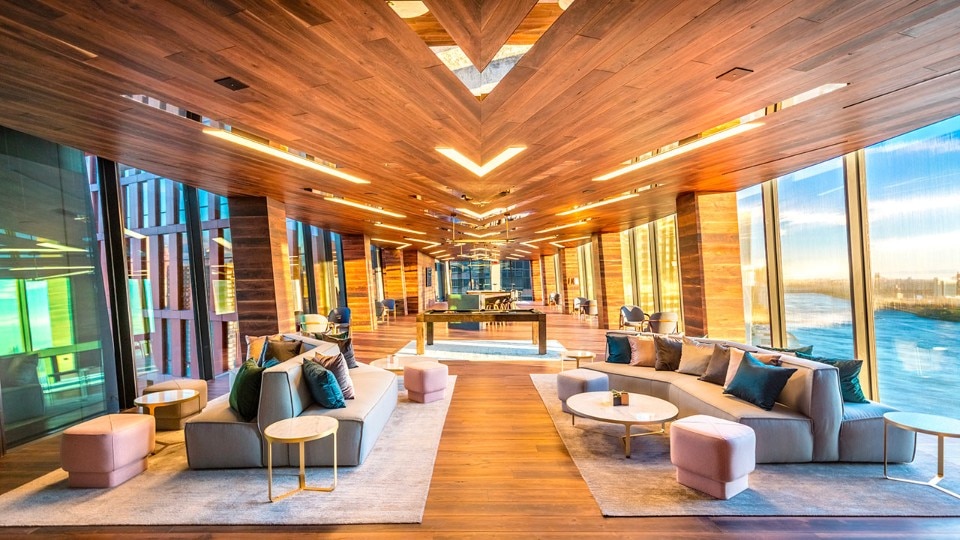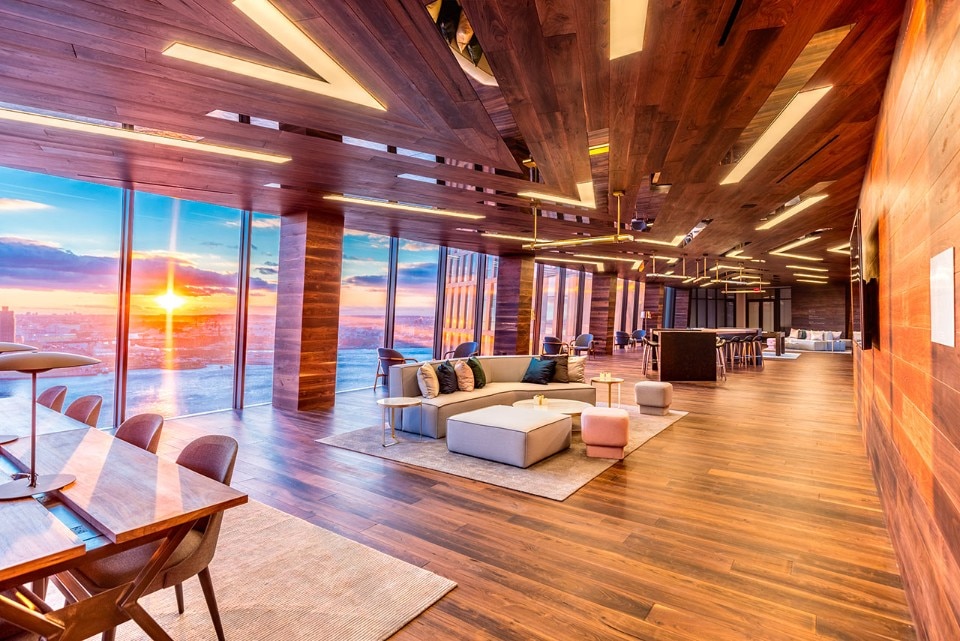This residential complex evoking the proportions of the nearby United Nations Secretariat, stands out for its sculptural design—two copper-clad towers that bend in the middle to meet at a skybridge—and brings a new dynamism to an overlooked area of the city. Made of a double-insulating glass realised by the Swiss specialists Glas Trösch, the skybridge is the highest in Manhattan and the first to be built in decades, and it houses a lap pool, lounge, and other shared amenities for the towers' 761 apartments. We asked Ayumi Sugiyama, director of Cultural Projects at SHoP architects and director of the American Copper Buildings project to investigate the constructive aspects of the glass bridge linking the two towers.
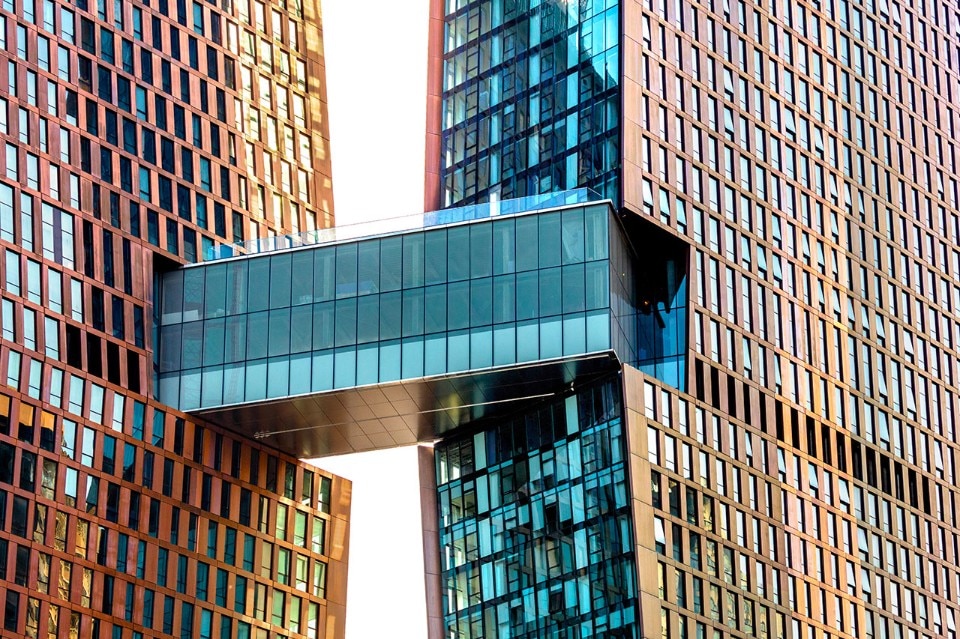
Completed to connect the two American Copper Buildings on East River, this skybridge is the highest in Manhattan and the first built in decades. How did you come to conceive this architectural typology?
The main architectural idea behind the form of the American Copper Buildings was born out of a set land use plan, or ULURP plan. The footprints of the towers were predetermined, so we worked through multiple iterations of the tower massings within the allowable zoning envelope. Considering their reading from the city and river below, and on the overall Manhattan skyline, we landed on the angled forms with the bridge connection, which work sculpturally together. The patterning of the façade’s staggering windows reinforces their movement by adding a visual moire effect, and the natural patina of the façade’s copper materiality adds richness to these living sculptures.
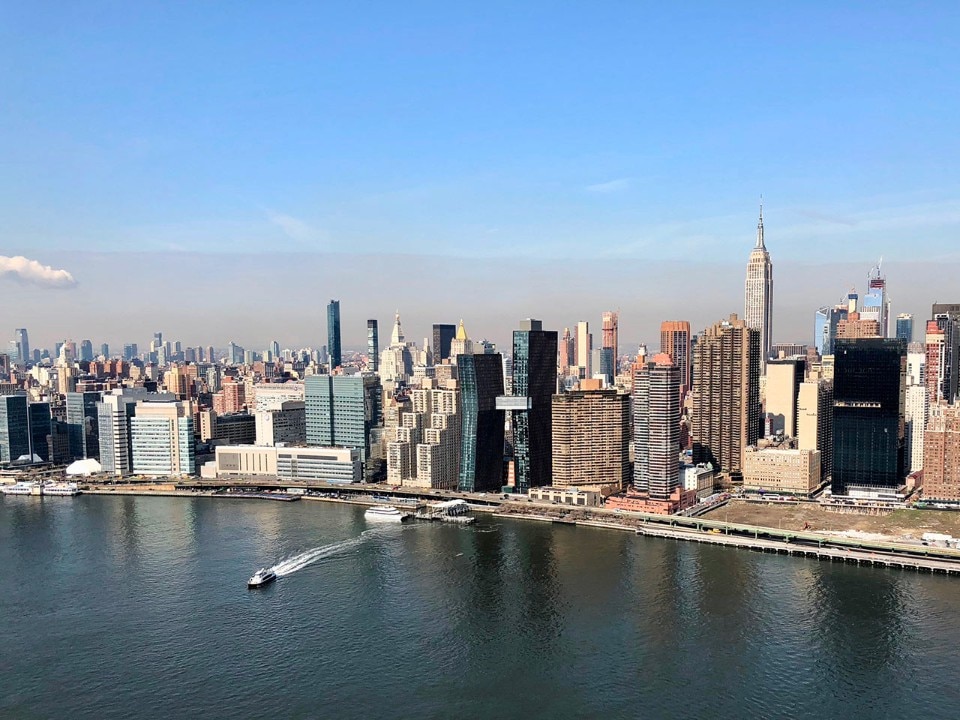
What were your references for this project?
For the bridge, we referenced precedents in the city – the copper West 32nd St. skybridge, East 24th St. and West 15th St. to name a few. The building and façade treatments developed intuitively and naturally to enhance the form of the buildings. Perhaps we were also influenced by our own Porter House project, one of our first completed buildings, where the panels were constructed in zinc.
Have functional reasons or the aesthetic appeal prevailed, in the skybridge’s project?
The skybridge works both aesthetically and functionally. Had we built two separate towers, we would have had to build two sets of everything from mechanical systems to building amenities. By connecting these two towers with a bridge, we could size the systems to service both towers and strategically locate them throughout the buildings and connect them through the bridge on the 27th floor. Programmatically, the skybridge houses a lounge for the residents on the top floor (L29), a lap pool on the middle level (L28), and roof decks for three of the residential units on top (L30).
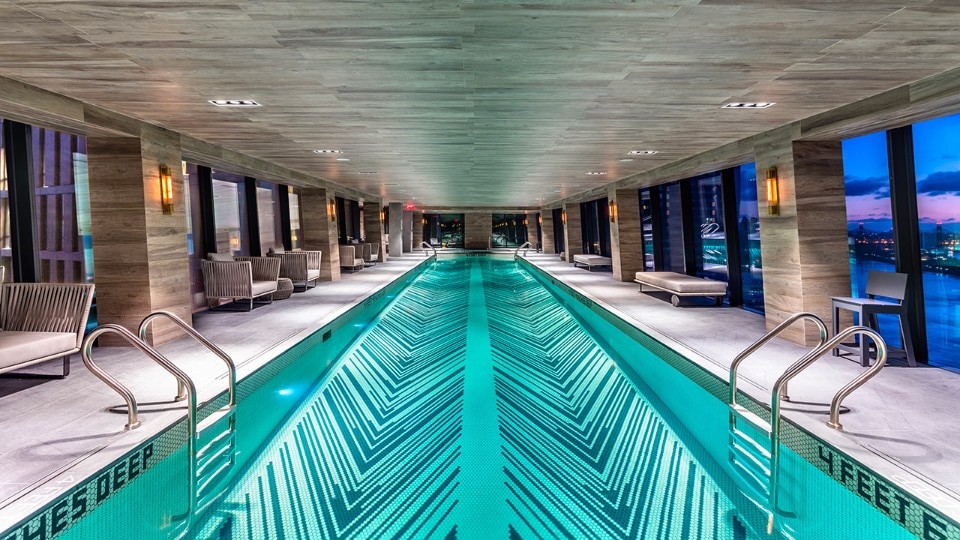
In terms of materials, the glass skybridge differs from the two buildings that are clad in bronze. Why this choice?
While the skybridge does the heavy lifting of connecting the critical systems, we wanted it to appear like it was delicately perched between the two towers, as if it were the diamond in a tension ring. We wanted the bridge to have a materiality that would contrast the copper façade both during the day and at night. After studying various frit patterns and options, we selected the Sefar Interlayer to use in our glass. The Sefar comes in a very fine aluminum mesh where the aluminum finish faces the exterior, and the interior-facing mesh is painted black. In effect, the fine aluminum mesh reads like a tint and allows for unimpeded views through the interlayer to the Manhattan skyline and the East River and beyond. At night, the Sefar glass is washed with light from top and bottom, allowing the bridge to glow.
- Project:
- American Copper Buildings
- Location:
- New York City
- Architects:
- SHoP Architectsp, New York (USA)
- Completion:
- 2017
- Developer:
- JDS Development Group, New York (USA)
- Metal Manufacturer:
- Elicc Americas Corporation, Escondido (USA)
- Insulating Glass Manufacturer:
- Glas Trösch, Bützberg (CH)
- Glass Structure:
- LSG
- Coatings:
- Glas Trösch, Bützberg (CH)


